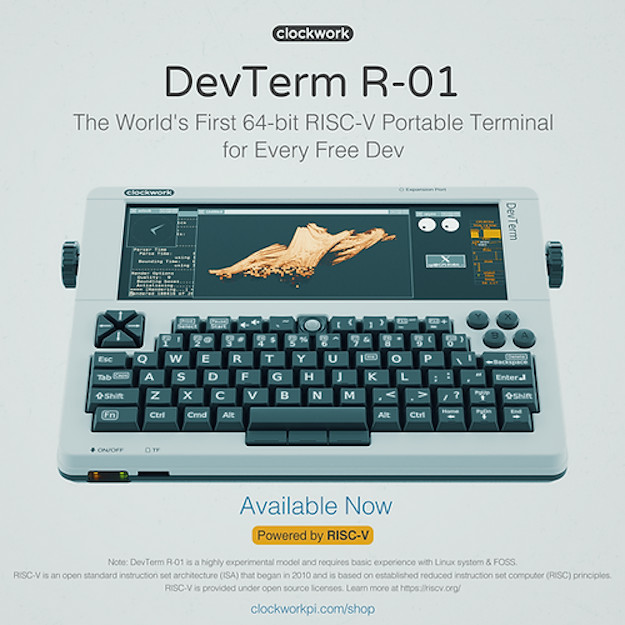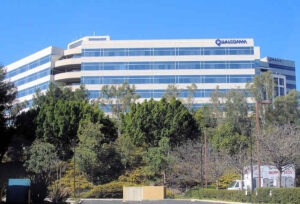The growth of SiFive and other companies focused on open source RISC-V-based processors will eventually bring the possibility of completely free and open computing to free and open source software advocates.

The fabless processor designer SiFive has another feather in its cap. It’s become the first startup focused primarily on the open source RISC-V processor specification to reach unicorn status. A couple of weeks back the company announced that it had raised $175 million in a Series F financing round, which values the company at over $2.5 billion, which is well over the $1 billion valuation needed to be considered a unicorn.
Actually, the successful fundraising round, led by the investment firm Coatue Management, was the least of the good financial news coming from the seven-year-old Silicon Valley startup this month. Two days earlier it announced it was selling its OpenFive connectivity business to Alphawave for $210 million, in order to focus on its RISC-V CPU cores.
This means that SiFive, which was founded by the same people who originally developed the RISC-V reduced instruction set architecture specification at the University of California, Berkeley, has in total raised more than $365 million in investment funding — and that’s not counting the money from the OpenFive sale, which brings the total up to $575 million.
In case you have trouble with large numbers, that’s well over a half billion greenbacks, BTW.
“The market has spoken and made it abundantly clear that RISC-V computing will be competing for the heart of all future computing platforms,” Patrick Little, SiFive’s CEO and board chair said in a statement. “As the founder and market leader of RISC-V computing, it’s our role to lead this ecosystem forward and offer customers advanced computing alternative to Arm and others. This valuation is a validation of our strategy, our incredible team, and our singular focus on building the leading portfolio of high-performance RISC-V compute products in the market.”
SiFive, RISC-V, and the Intel Foundry Services Innovation Fund
SiFive is also going to be helping Intel spend some of the $1 billion that Intel has set aside to help it jump start the processor foundries it’s building in the U.S. Intel announced last year that its new stateside foundries wouldn’t just be producing its own branded chips, but will be open to customers needing to have their own custom chips manufactured — including chips based on architectures such as RISC-V and Arm.
This now makes Intel a major component of the RISC-V ecosphere, and at the same time brightens the open source architecture’s future.
In February, Intel announced it had become a Platinum member of RISC-V International, the standards organization that represents the RISC-V community. At the same time, it announced it had started a billion-dollar fund to support fabless startups, and that it was partnering with SiFive and three other RISC-V-based companies, which will give the companies an on-ramp for bringing their custom chip designs to fruition at Intel’s soon-to-be-operational U.S. foundries, bypassing the difficulties associated with dealing with foundries located halfway around the world.
“The IFS innovation fund will help IFS customers develop modular technology including SiFive RISC-V processor IP optimized for the latest Intel process technology,” Bob Brennan, VP and GM of customer solutions engineering at Intel Foundry Services said at the time. “We are looking forward to a multi-year coordinated effort with SiFive to continue to build out the RISC-V ecosystem by combining Intel open-source software expertise and resources with SiFive’s RISC-V expertise and IP.”
Of the other three RISC-V companies in this partnership with Intel, Ventana Micro Systems is perhaps the most interesting. A four-year-old startup that only came out of stealth mode about a year ago, Ventana has been quietly working with hyperscalers and original equipment manufacturers both in the U.S. and China, to integrate its 16 core chipsets into their infrastructures and products.
Ventana’s founder and CEO, Balaji Baktha, recently told FOSS Force that their technology takes about two years off the time a hyperscaler typically needs to bring a new processor to production workloads.
The other two RISC-V-based companies partnering with Intel Foundry Services are Esperanto Technologies, a supplier of high-performance RISC-V accelerators for artificial intelligence workloads, and Taiwan-based Andes Technology, which supplies CPU cores for the embedded market.
“Intel making available its state-of-the-art silicon processes and Open Chiplet Platform packaging technologies along with its formidable manufacturing capacity to Andes Technology and other RISC-V IP suppliers’ customers will greatly accelerate the widespread adoption of the open-source RISC-V ISA,” Frankwell Lin, the president and co-founder of Andes Technology said in a statement.
Importance to the FOSS Community
In addition to benefiting hyperscalers, traditional data center operators, original equipment manufacturers, and other enterprises, the work being done by SiFive, Intel, and other companies involved in the RISC-V arena has the potential to benefit the copyleft orientated free and open source software community as well.
Although it has long been possible for FOSS advocates to run systems using nothing but open source software and firmware, finding hardware unencumbered by proprietary silicon from Intel, AMD, Arm and others has been all but impossible. However, SiFive opened the door for completely free and open source hardware on which to run Linux, BSD, and other free software when it released its RISC-V-based HiFive Unleashed developer board four-years ago, which immediately prompted Debian and some other projects to port their Linux distributions to Linux.
Since then the number of RISC-V devices capable of running Linux and BSD has grown substantially, although so far these have been relatively low powered devices, released either for the IoT market or as proofs of concept — with little to nothing available for people who just want to run free software on reasonably capable free hardware.
That’s changing too.
A couple of weeks ago Clockwork Pi announced the availability of a RISC-V version of its DevTerm small-form-factor portable computer that’s normally powered by a Raspberry Pi (which uses a proprietary Arm processor) for $239.
It’s not quite ready for prime time, however. The online listing calls it “a highly experimental model and requires some experience with Linux system and FOSS,” and adds that, “[w]e strongly recommend all beginners to choose other models” — but compare it to the old HiFive Unleased, which required a lot of work to get running and came with a $1,000 price tag, and it’s obvious that the day is getting closer when you’ll be able to buy a high-end RISC-V laptop from the likes of System76 or Tuxedo.
There’s also a RISC-V-based phone it the works too, although it will at first contain some proprietary Arm silicon as well. This one is being developed by NLnet, an Amsterdam-based nonprofit organization that advocates for an “open internet, and the privacy and security of internet users.” This phone is expected to be available sometime this year.
Christine Hall has been a journalist since 1971. In 2001, she began writing a weekly consumer computer column and started covering Linux and FOSS in 2002 after making the switch to GNU/Linux. Follow her on Twitter: @BrideOfLinux








